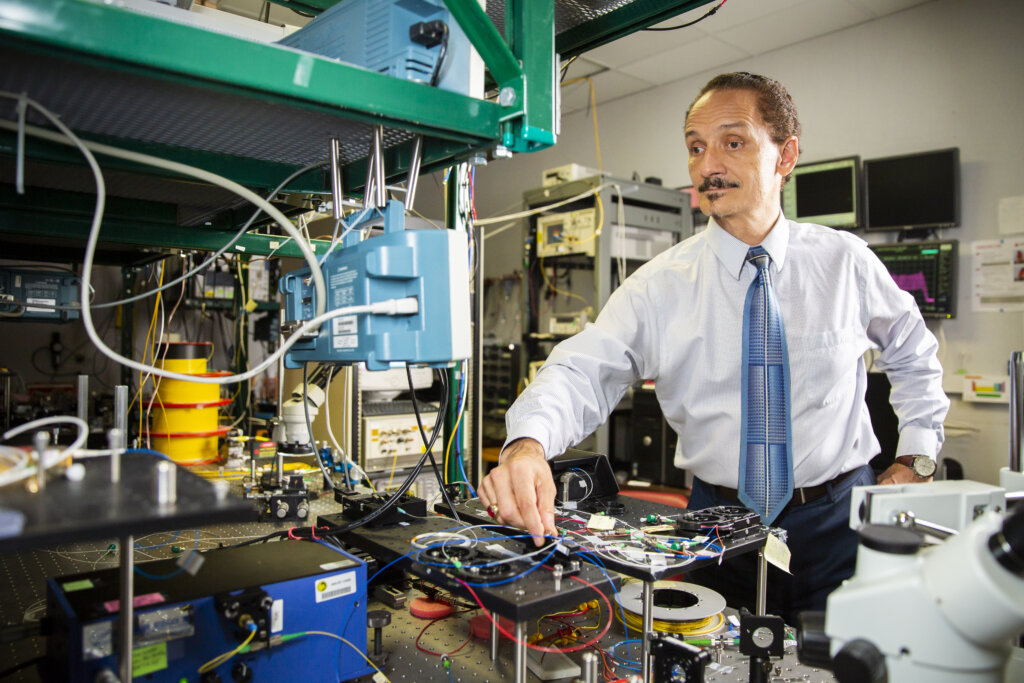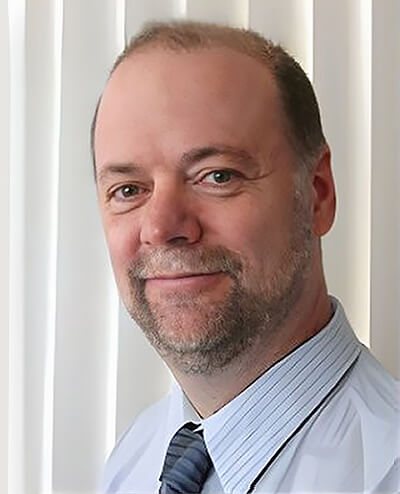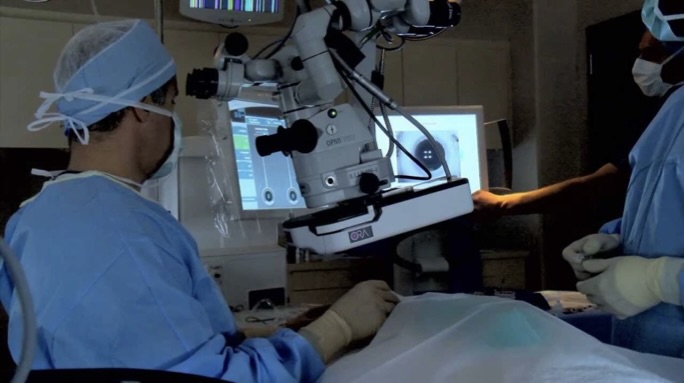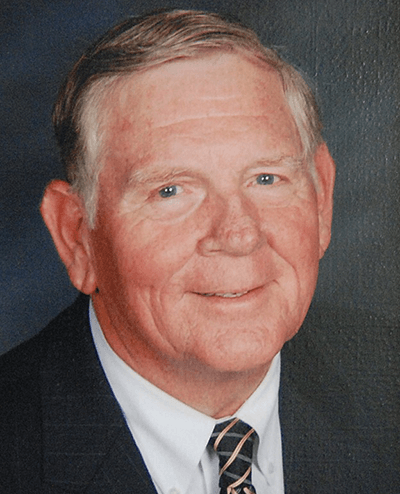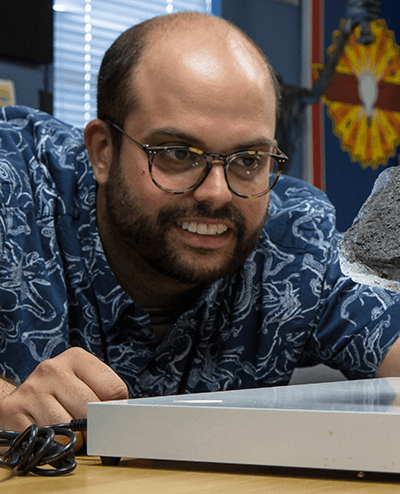
2024 Inductees

Peter J. Delfyett, Ph.D.
Pegasus Professor
University Trustee Chair
University Distinguished Professor of Optics, Electrical Engineering & Physics
Director, Townes Laser Institute
University of Central Florida
45 U.S. Patents
Peter J. Delfyett, Ph.D. is Pegasus Professor, University Trustee Chair, and University Distinguished Professor of Optics, Electrical Engineering, and Physics at CREOL, the College of Optics & Photonics at the University of Central Florida, where he also serves as the Director of the Townes Laser Institute.
Throughout his career, Dr. Delfyett has made significant discoveries in the areas of ultrafast optical device physics, semiconductor diode based ultrafast lasers and their application to optical communication and signal processing, including the development of the world’s fastest, most powerful mode-locked semiconductor laser diode. Dr. Delfyett’s groundbreaking innovations also include the demonstration of an optically distributed clocking network for high-speed digital switches and supercomputer applications, and the first observation of the optical nonlinearity induced by the cooling of highly excited electron-hole pairs in semiconductor optical amplifiers.
In addition to his academic pursuits, Delfyett founded Raydiance, Inc., a spin-off company developing high power, ultrafast laser systems, based on his research, for applications in medicine, consumer electronics, defense, material processing, biotechnology, automotive, and other key technological markets.
Dr. Delfyett is a Member of The National Academy of Engineering. He is also a Fellow of the American Physical Society, American Association for the Advancement of Science, Institute of Electrical and Electronics Engineers, National Academy of Inventors, National Society of Black Physicists, Optica, and the International Society for Optics and Photonics. He is also the recipient of the NSF Presidential Early Career Award for Scientists and Engineers, the APS Edward Bouchet Award, the Florida Academy of Science Medal, the Townsend Harris Award, the IEEE Photonics Society’s William Streifer Scientific Achievement Award, and the APS Arthur L. Schawlow Prize in Laser Science.
Dr. Delfyett holds a B.E. in Electrical Engineering from The City College of New York and an M.S. degree in Electrical Engineering from The University of Rochester. He went on to complete both an M.Phil. and a Ph.D. at The Graduate School & University Center of the City University of New York.
A MENTION ABOUT INVENTION – 3 Questions for the Inventor
Q1. Of your patents/inventions, which one is your favorite and why?
It’s difficult to pick only one; however, there are a few that stand out, in particular. The first is a collection of patents that show how one can circumvent fundamental physical limitations on the generation and amplification of short optical pulses from semiconductor lasers. This collection of patents served as the basis for a company that we spun out of UCF. The company went on to be one of the first in the “internet of things,” and the laser source that the company manufactured was used by 1) Samsung for cutting the Gorilla glass in your cell phone, 2) Delphi Automotive for laser-drilling precision holes in manufacturing advanced fuel injectors, and 3) Boston Scientific for laser-cutting novel intravenous stents to improve blood flow in patients.
The second patent that is most ‘memorable’ is the “Optical modulator with linear response, US 8,842,998 (2014).” The reason why this is so memorable is because I had this idea “in a dream while taking a nap.” I had just given a lecture at a research program review, and while the talk went very well, I knew there was a ‘weak point’ in one of the technologies that we were presenting. After the talk, there was a group lunch, and afterward, I went back to my room to rest for a bit. Well, I laid my head down on the pillow, thinking about the weak point and that, at some point, someone would recognize it. Apparently, I had fallen asleep for maybe 10–20 minutes, then I woke up ‘in a flash’ with the idea for the linear modulator as a solution to the weak point. Another reason why this is interesting is that August Kekulé discovered and visualized the ring structure of benzene after dreaming of a snake eating its own tail, showing that the mind can solve extremely difficult problems if given the right set of circumstances.
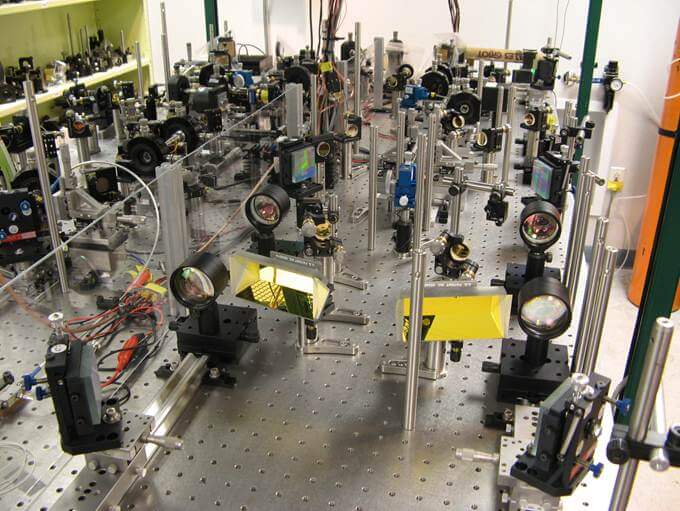
Q3. What is your process when developing new inventions/innovations?
I didn’t initially have an ‘intention’ to become an inventor. However, I was focused on becoming a skilled scientist and engineer in advanced laser science and technology. During graduate school and my early years in industry, I discovered that as I tackled challenging problems, I would gain unique insights that led to creative solutions, which were often patentable. Once I learned that the patent process is an integral part of problem-solving, it became easier to identify which aspects of a solution were patentable.
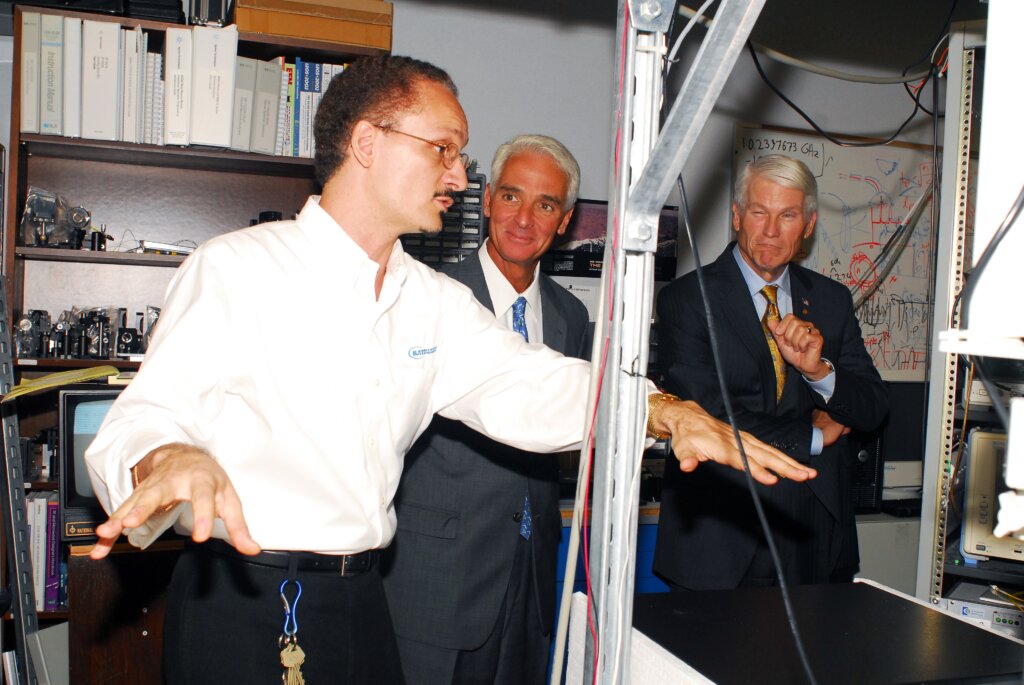
Q3. What is your process when developing new inventions/innovations?
It’s challenging to teach “creativity” or “how to invent.” Generally, we are trying to solve a problem with no known solution. What I’ve found is that I start by trying to understand the limitations or roadblocks of the problem I’m addressing. If I can identify the problem and why it’s impeding progress, I might be able to devise a solution to overcome those specific limitations.
One approach I use is to “work with the limitation, not against it.” By this, I mean that if there’s a physical constraint preventing technological advancement, I try to see if I can leverage that limitation as an advantage. An analogy I like to use is from judo: instead of using force to counter an opposing force, can we use the incoming force to our advantage, by pulling the opponent?
Another method that I’ve found enhances creativity is what some people call “thinking outside the box.” For me, this simply means not confining myself to conventional approaches. For those who find this hard to visualize, I prefer to call it “on-your-head thinking.” My analogy here is that if you stand on your head and look around the room, you get a very different perspective of what the room looks like. For example, you can see things hidden underneath the sofa. In terms of problem-solving, this means that if we approach the problem from an opposite direction, or by ‘turning the problem around,’ we might discover a solution we hadn’t seen before. So, instead of tackling a problem ‘head-on,’ consider approaching it ‘on your head.’
